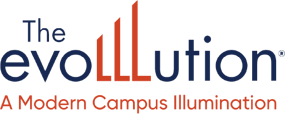Published on
Beyond the Numbers: Unpacking the True Impact of Lifelong Learning

Lifelong learning is vital in higher education, but its impact extends beyond enrollment and completion rates. By combining data with learner goals and career outcomes and leveraging technology and partnerships, universities can ensure lasting value for students and society. In this interview, Ryan Torma discusses balancing quantitative and qualitative data along with technology’s role in measuring success.
The EvoLLLution (Evo): How do you define and measure the true impact of lifelong learning beyond traditional data-driven metrics?
Ryan Torma (RT): It’s important to capture and communicate data such as enrollment and completion rates. Those metrics give us a high-level view of the scope of impact we have and if students are completing our programs, but those metrics don’t tell the whole story. We conduct additional types of research to help us better understand our learners, their needs and how well our programs meet their needs.
We use course evaluations to help us understand what learners found helpful in our courses and what we might improve for future offerings. We conduct postprogram learner surveys that help us understand how well we meet learner needs. We know that learners enroll in our programs to address a need in their lives. So, to better understand those needs, we ask about the goals learners had when enrolling in our programs and how well our programs helped them accomplish their goals.
It helps us understand learner satisfaction in much more nuanced ways. Perhaps the simplest and often most powerful form of research is to simply talk with our learners and alumni about their lives, their goals and how well they liked the program. These conversations provide us with rich insights that help us understand learners’ needs and how our programs make a meaningful difference in their lives.
Evo: What strategies help balance quantitative data with qualitative, intangible outcomes in professional development?
RT: It’s important to collect a variety of data in a variety of ways. Quantitative data such as enrollment, completion rates or financial margins are great at showing high-level what is happening across the department and the university. Quantitative data helps us to see the work in aggregate and help us see important trends. Qualitative data such as open-ended survey responses, interviews and learner conversations help us understand our learners’ rich and varied lives and needs in a robust way.
Qualitative data helps us understand our programs’ real and powerful impact through compelling human stories. It is important for us to gather data in a variety of ways and from a variety of audiences to get a more complete picture of the impact of our work. In addition to gathering information from our learners, we also have regular conversations with advisory boards that give us input on our program portfolio and curricula. We have a business developer on our staff who works with companies and organizations to understand their needs. We work with market researchers and state economic development professionals to understand current and future workforce needs.
We also engage with alumni and stakeholders to share our work and hear about their perceptions and needs. Through this broad collection of data and interactions, we can create a rich picture of the scope, outcomes and importance of our work.
Evo: How can institutions effectively assess the broader societal and economic impact of lifelong learning programs?
RT: As a part of a large, public university system, communicating the impact of the university and specifically our lifelong learning programs is an important part of our work. We want to demonstrate the critical value we provide to the people within and beyond the borders of our state. At the university level, there are a variety of tools, reports and websites that provide information about the university’s impact.
We actively engage with our community and stakeholders through advocacy, public and government relations, and a strong media presence. As a continuing education department that is one part of a larger whole, we support university-wide initiatives by providing data, information and stories about our unit’s work and impact. We are also very active within our college in sharing our story.
Evo: What role does technology play in capturing both measurable and intangible student success in lifelong learning?
RT: Technology plays a big role in helping us to gather data about our scope and impact in supporting learners. Our enterprise-wide noncredit registration and SIS system helps us capture and report on the large scope of work happening across the system. We are currently implementing a new course evaluation tool to get better data and insights from our course evaluations. We have an online survey tool that helps us create alumni surveys that give us insight into the longer-term impacts of our programs.
Technology is also core to sharing data and stories about our work and impact. We are regularly publishing reports and stories about our work on our website, through social media platforms, engaging in traditional media relations, and we also make significant use of email campaigns for prospective learners and alumni to share the college’s good work.
Evo: How can professional development programs be designed to reflect personalized, learner-driven success?
RT: Learners register for our courses and programs for a wide variety of reasons. Some want to gain skills for their current role. Some are looking to prepare for a promotion. Some are looking to make a career change, and others may be looking to reenter the workforce after time away. Learners take different paths to address these needs. Some register for a single course, some a small collection of courses, and others complete one or more certificate programs.
All our programs are open enrollment, and we work to make the registration process as simple as possible, so learners can easily sign up for the courses that meet their needs. Within our courses, we work to create activities and assignments in which students can bring their own knowledge to the course and apply the learning to their own context. Within our certificate programs, we often offer a variety of electives, so learners can shape the experience to respond to their own interests and needs.
We also offer microcredentials such as certificates and badges with courses and program completion, so learners can communicate their learning accomplishments to their supervisors and future hiring managers. We see that learners appreciate us doing this, and it’s common to see our alumni sharing their certificate accomplishments and displaying their badges on their LinkedIn pages and in their email signatures.
Evo: How do you advocate for a more holistic approach to measuring success to stakeholders focused on financial and operational metrics?
RT: As a self-supporting unit within the university, it is critical that we watch and manage the department’s operational efficiency and financial health. While these factors are necessary, they are not sufficient for us to be successful in achieving our mission. We serve the university’s education and outreach mission. We exist to help learners gain knowledge and skills that help them thrive. We accomplish our mission when we serve learners well and do so in a sustainable way.
By better understanding learners’ needs and motivations when attending our programs and how well we are meeting their needs, we are better able to design programs that meet their needs and the needs of our communities, state and beyond. When we share the data and stories about the powerful impact our programs have for our learners, others can better understand and support the important work we do.



